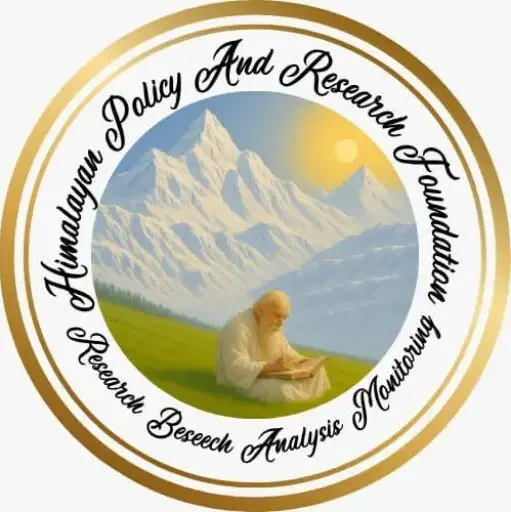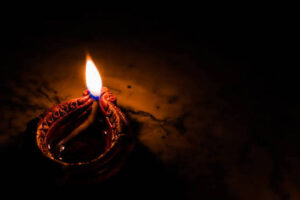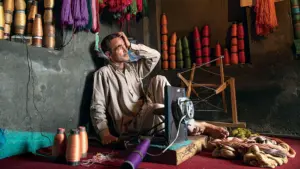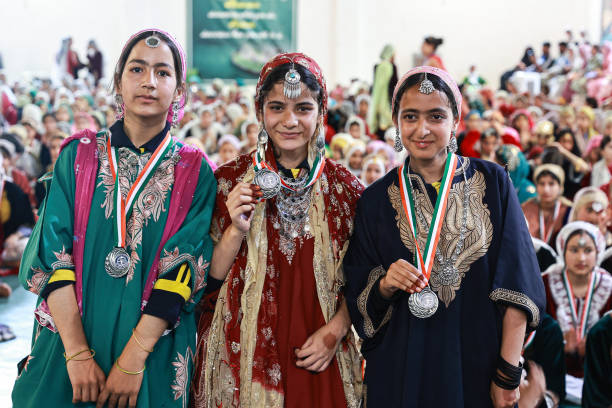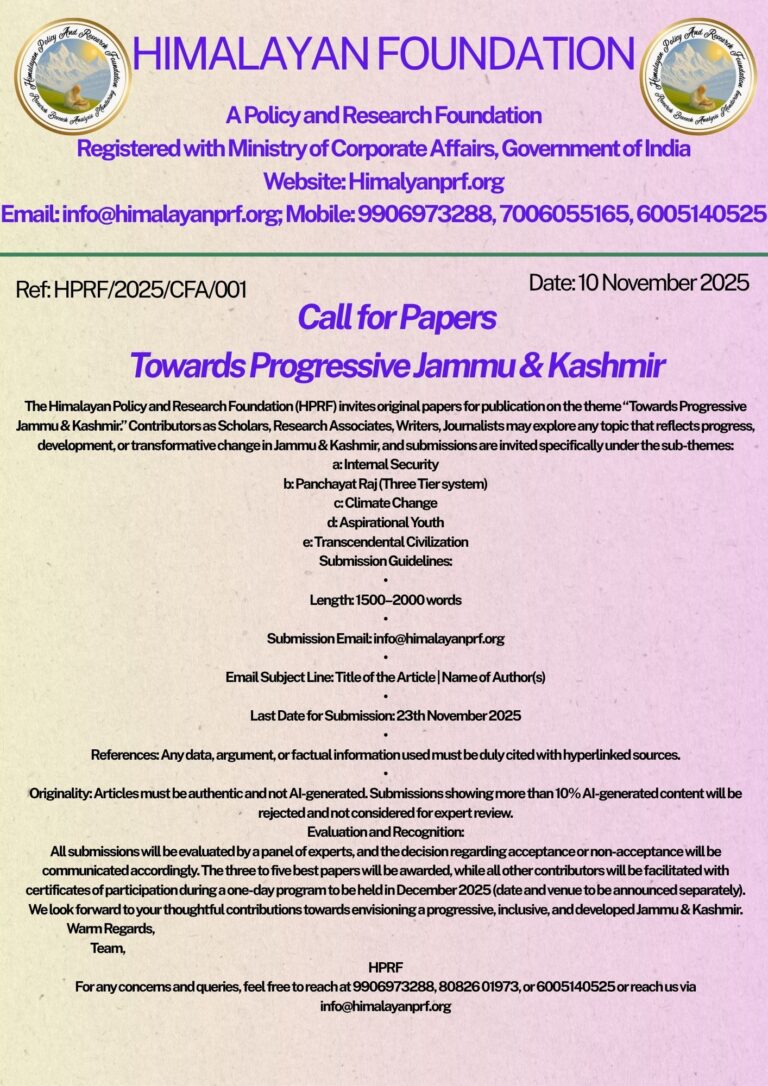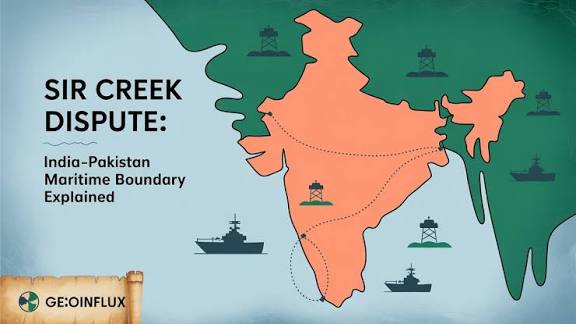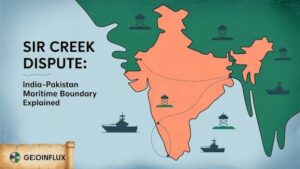By: Irshad Ahmad ( Research scholar )
The evolution of women’s empowerment in India has been marked not merely by enhanced access to education, health and employment but by a deeper shift towards agency, autonomy and leadership. The Indian policy framework-most notably the Beti Bachao, Beti Padhao campaign, the National Policy for Women (2016) and the National Mission for Empowerment of Women-reflects a recognition that women’s full participation is essential for sustainable human and economic development.
The theoretical foundation for this shift can be articulated through Amartya Sen’s “capability approach” (Sen, 1999), which emphasises not simply what individuals have but what they are able to do and become, and on Naila Kabeer’s (1999) conceptualisation of empowerment as involving resources, agency and achievements. Meanwhile Western feminist thinkers such as Simone de Beauvoir (“one is not born, but becomes, a woman” / Beauvoir, 1949) and Martha Nussbaum (2003) have offered normative frameworks for gender justice that focus on freedoms, dignity and social inclusion. In this national and global theoretical milieu, the specific case of Jammu & Kashmir offers a compelling study of how structural change and individual agency intersect under conditions of conflict, political reorganisation and socio-cultural transition.
J&K’s socio-historical context is distinctive. Women have long had a presence in Rishi-Sufi traditions (for example Lal Ded, Dehat Bibi) that emphasise equality and inner freedom, yet post-colonial, conflict-impacted decades limited their full public presence. However, Jammu and Kashmir’s contemporary socio-political discourse vindicates a significant transformation in gender dynamics, characterized by an unprecedented surge in female participation, performance, and public visibility. The phenomenon of women outshining men across educational, administrative, medical, athletic , politics, media and entertainment domains signifies not merely a demographic shift but a deeper societal transformation in the structures of opportunity and recognition within the region.
The transition since 2019, and more so in the last few years, reflects what might be called a “re-emergence” of female agency in the public sphere—education, entrepreneurship, public services, sports, and governance. Empirical data substantiates this view point. For instance, the labour-force participation rate (LFPR) of women in J&K in 2021 was reported at 32.8%, compared with a national female LFPR of 25.1% (Her Circle, 2022) — thus exceeding the national average in this key metric. Moreover, the data show that in rural J&K the female LFPR was 35.3% while urban female LFPR was 22.3%, reversing the usual rural–urban divide (Her Circle, 2022). In the domain of rural employment programmes, J&K’s women’s engagement is substantial: over 563,485 women in the last five years have been granted employment under the Mahatma Gandhi National Rural Employment Guarantee Act (MGNREGA), with the UT government spending over ₹1,100 crores in that period to generate person-days, including 283,476 women in one year alone . Another tabled report shows that over the three financial years 2022-23 to 2024-25, J&K engaged 10.6 lakh women under MGNREGS: 3.3 lakh in 2022-23, 3.5 lakh in 2023-24 and 3.8 lakh in 2024-25 (Rising Kashmir, 2025). These numbers testify not simply to participation, but to expanding scale and consistency of inclusion. On the enterprise front, 20,691 female‐owned enterprises have been registered in J&K in the last four years under the Prime Minister Employment Generation Programme (PMEGP) ,signalling a shift from wage employment to entrepreneurial agency. In the domain of institutional empowerment, the central government under the Mission Shakti scheme allocated ₹10.42 crore to J&K over two years (2023-24 & 2024-25) to establish and support 22 empowerment hubs (one State Hub for Empowerment of Women + 20 District Hubs). Further, under the HEW (Hub for Empowerment of Women) scheme within Mission Shakti, 28,413 women in J&K were assisted in 2024-25, up from 24,574 in 2023-24 and 17,110 in 2022-23, reflecting upward momentum (Kashmir Life, 2025). Additionally, over 7 lakh women in J&K are members of 80,000 self-help groups (SHGs) under the UMEED scheme (JKRLM) (Precious Kashmir, 2024), reflecting both collective agency and grassroots organisation.
These quantitative shifts are complemented by notable individual examples that bring theory into lived reality. For instance, in the entrepreneurial domain, Saniya Zehra (often called “Bee Queen of Kashmir”) transformed beekeeping into a branded economic venture (Kashmir Pure Organics). Mehvish Mushtaq developed a mobile application “Dial Kashmir” and gained national recognition as a tech‐entrepreneur—figures that reflect what Kabeer would call the “achievement” dimension of empowerment (Kabeer, 1999). In sports, Tajamul Islam (kickboxing) founded a sports academy for girls in Bandipora; Bilquis Mir (kayaking) and Jasia Akhtar (cricket) represent how Kashmiri women are asserting presence in arenas long dominated by men. Likewise, Farahan Bhat’s visibility in Bigg Boss signifies the expanding representational space for Kashmiri women within national media,popular culture and entertainment industry.These individuals serve as what Bourdieu calls symbolic capital . within regional society, signalling the possibility of female leadership and stylising new horizons of achievement. Academically, women’s entrance into higher professional education in J&K has accelerated (JETIR, 2024) and enrolments in medical colleges are approaching parity in many programmes, though disaggregated data remain patchy. Data shows the implementation of women’s reservation in panchayats in J&K making progress: one survey found that about 45% of elected representatives in selected local-governance bodies were women, surpassing mandated norms (International Journal of Multidisciplinary Research & Growth Evaluation, 2024). Beyond this numerical statistics lie issues of decision-making power, resource control and social recognition, which remain contested.
Similarly,J&K’s medical and allied health fields in J&K offer an interesting case for examining how gender, profession and moral contours intersect. The observable over representation of women in the medical field reveals how gendered occupational preference and humanistic professionalism are sociologically convergent. According to Carol Gilligan’s ethic of care framework, this trend can be seen more as a manifestation of relational morality whereby women’s moral propensities for empathy, caregiving, and social responsibility complement the technical and epistemic requirements of the medical field.This intersection situates female professional identity at the confluence of intellectual meritocracy and affective labor, thereby challenging the historically masculinized rational-technical paradigm of modern professions . The persistence of this trajectory within J&K also indicates a broader hermeneutic shift in socio-religious consciousness- transforming women’s engagement in the public sphere from one of moral restriction to moral participation, legitimized through both scriptural reinterpretation and socio-cultural adaptation (Mahmood, 2005).
In the realm of sports, traditionally constructed as a masculinist field of performative vigor and corporeal discipline-the emergence of women athletes in Jammu and Kashmir represents a critical site of gender renegotiation. Increasingly, participation of women in both conventional and unconventional sporting disciplines can be theorized through Judith Butler’s concept of gender performativity.Here, athletic engagement becomes a performative act that subverts and reconstitutes the gender binary by reinscribing bodily agency within public visibility. Rapid participation of womenfolk in competitive sports, therefore, transcends the domain of individual accomplishment; it constitutes a counter-hegemonic discourse that destabilizes normative codes of femininity. Their visibility testifies a symbolic rupture in the performative grammar of gender, rearticulating power through personified resistance and social legitimacy. Collectively, these visible transformations across governance, medicine and sports delineate as well as spacify the parameters of a new gendered modernity in Jammu and Kashmir-one that is simultaneously embedded within the region’s socio-religious ethos and responsive to global feminist epistemologies..
From a theoretical vantage, these trends in J&K reflect a partial realisation of Sen’s expansion of capabilities and Nussbaum’s list of central capabilities (life, bodily integrity, practical reason, affiliation). The increased numbers of women entering formal labour, establishing enterprises and participating in governance signal a broadening of capability sets. Within feminist theory, this aligns with Naila Kabeer’s notion of “resources” (material, human, social), “agency” (ability to define one’s goals and act) and “achievements”. The data from J&K show improvements across these dimensions, but the magnitude remains uneven.Importantly, national policy frameworks such as Beti Bachao, Beti Padhao have contributed via awareness, institutional reform and scheme outreach; in J&K the Union Territory administration has aligned programmes like UMEED, Hosla, Tejaswani, SHG-formations, empowerment hubs and wage-employment schemes to the same goals of making women “agents of change” rather than passive recipients. The combination of policy impetus, empirical uptake and symbolic role-models creates a constructive environment for gender‐equitable development. However, gaps remain. Female representation in the J&K Police stands at only about 6% (media reporting) and women’s leadership in public services, industry and high-technology sectors is still far from parity. In j&k, Land ownership by now women is below national average ( 7.6%).
The case of Jammu & Kashmir elucidates how women are increasingly shifting from marginalised presence to visible agency—participating in work, entrepreneurship, sports, governance, and community leadership. Empirical data shows substantive and measurable gains: rising female labour-force participation, thousands of female entrepreneurs, expanding SHG membership, and empowerment hub outreach. Amratya Sen, Kabeer, de Beauvoir, and Nussbaum’s theoretical frameworks provide interpretive lenses: these gains are about more than just numbers ; they’re about redefining or reimagining gendered constructed roles, increasing freedoms, and paving the way for women to become change agents.While challenges remain particularly around leadership, structural inequality, remote-area access and patriarchal norms-the trajectory is positive. If national and UT policies continue to emphasise not just access but agency, and if the role-models multiply and institutional support deepens, then the women of Jammu & Kashmir may truly embody the vision of gender-equitable development at the intersection of region, culture and modernity.
References.
Amartya Sen. (1999). Development as Freedom. Oxford University Press.
Beauvoir, S. de. (1949). The Second Sex. Vintage Books (English translation 1989).
Gilligan, C. (1982). In a Different Voice: Psychological Theory and Women’s Development. Harvard University Press.
Government of India. (2016). National Policy for Women: Articulating a Vision for Empowerment. Ministry of Women and Child Development.
Government of India. (2015). Beti Bachao, Beti Padhao Yojana. Ministry of Women and Child Development.
Government of India. (2010). National Mission for Empowerment of Women (NMEW). Ministry of Women and Child Development.
Her Circle. (2022). Labour Force Participation Rate of Women in Jammu & Kashmir. Retrieved from https://hercircle.in
International Journal of Multidisciplinary Research and Growth Evaluation. (2024). Women’s Representation in Local Governance in Jammu & Kashmir. Vol. 5
Precious Kashmir. (2024, October). Over 7 Lakh Women Empowered through Self-Help Groups under UMEED in J&K. Retrieved from https://preciouskashmir.com
Rising Kashmir. (2025, March). Women Empowerment under MGNREGA in J&K: 10.6 Lakh Women Engaged over Three Years. Retrieved from https://risingkashmir.com
JETIR (Journal of Emerging Technologies and Innovative Research). (2024). Gender and Higher Education Trends in Jammu and Kashmir. Vol. 11 (4).
Kashmir Life. (2025, April). Mission Shakti in J&K: 28,000 Women Empowered under HEW Scheme. Retrieved from https://kashmirlife.net
Mahmood, S. (2005). Politics of Piety: The Islamic Revival and the Feminist Subject. Princeton University Press.
